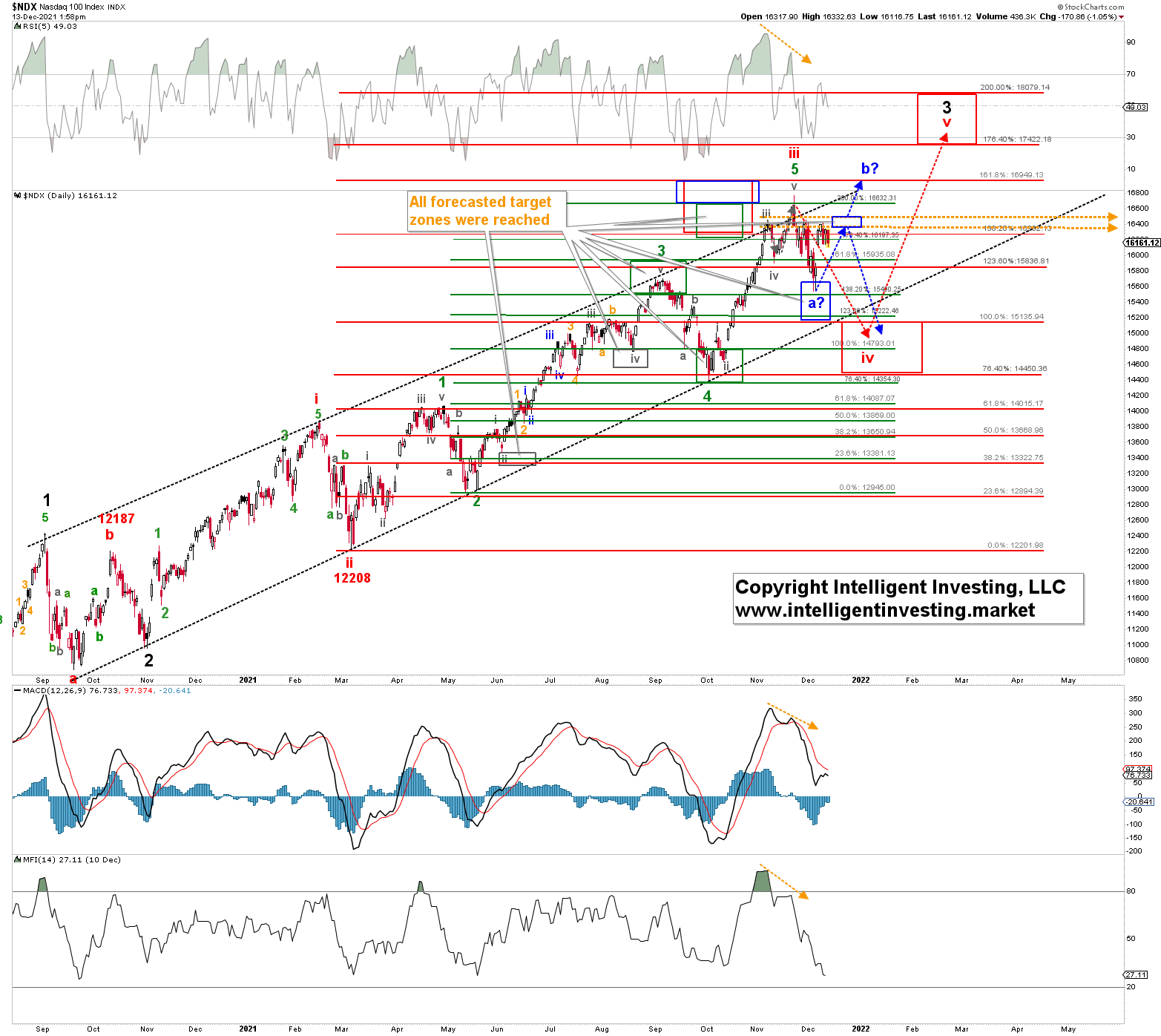Over the past several weeks (and many times before that), I have kept readers abreast of what to expect from the NASDAQ 100. As Figure 1 below illustrates, the index topped and bottomed in all the ideal target zones I forecasted.
In the current case, the index topped close to the ideal ~$17,000 target ($16,765 on Nov. 22). Then, it went on to bottom, a bit shy of the initial downside target (7.4% vs. 10-15%). But, the NDX topped last week right in the ideal target zone I had set forth prior, see here. I concluded then:
"The index is, thus, now at an inflection point, and it only requires a catalyst to start the potential c-wave lower already. A break below yesterday's massive futures-driven gap-up open would be an excellent first signal the red wave-iv lower target zone is up first before 17,000 is seen."
Thus, using the Elliott Wave Principle (EWP) to forecast where an index or stock is most likely going next is still one of the most powerful tools available to any market participant. So what is next?
Figure 1: NDX 100 daily candlestick chart with detailed EWP count and technical indicators.

Today's price action broke strongly below last Tuesday's gap-up open, which, therefore, now favors (green) minor waves a and b, which have completed and green wave-c is now under way. The blue dotted arrow shows a simple c=a relationship targeting exactly the red 100.00% Fibonacci-extension of (red) intermediate-wave-i, measured from the wave-ii low (February high and March low, respectively) at around $15,135. The index will have had a 9.7% correction at that level, fulfilling my forecast from Nov.17 (see here). Note that 100% is a typical 4th wave target in the EWP when the 3rd wave tops (close to) the 161.80% Fib-extension. It also means the subsequent 5th wave will ideally target the (red) 200.00% extension at $18,079.
Namely, this current pattern repeats the recently one-degree lower five-wave sequence in green: note where (green) minor waves-3, 4, 5 topped and bottomed?
This market movement is the self-repeating, meaning it shows the fractal nature of the markets. It works on the more minor degree, but it also works on the larger degree waves. There is nothing mysterious or unpredictable about the markets at all. It shows one does not need news to know what the markets will most likely do next. Now, doesn't that make the EWP one of the best, objective, reliable, and accurate forecasting tools available?
Thus, while others were primarily still looking for higher prices, I already "warned" last week: "it appears, in the short-term, the easy money has been made. Letting the market decide what's next would be a prudent approach." As always, to those who want to listen, to be forewarned is to be forearmed.
